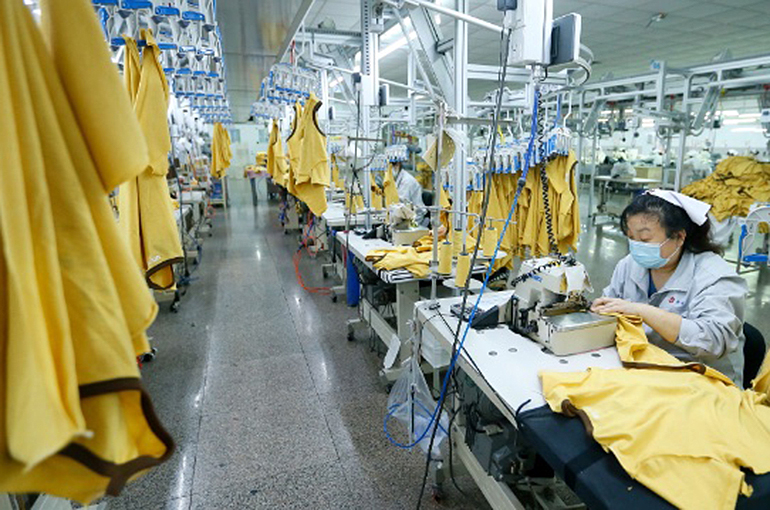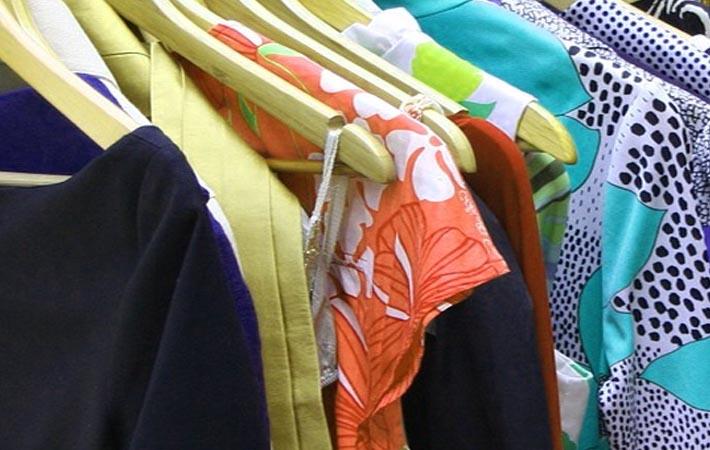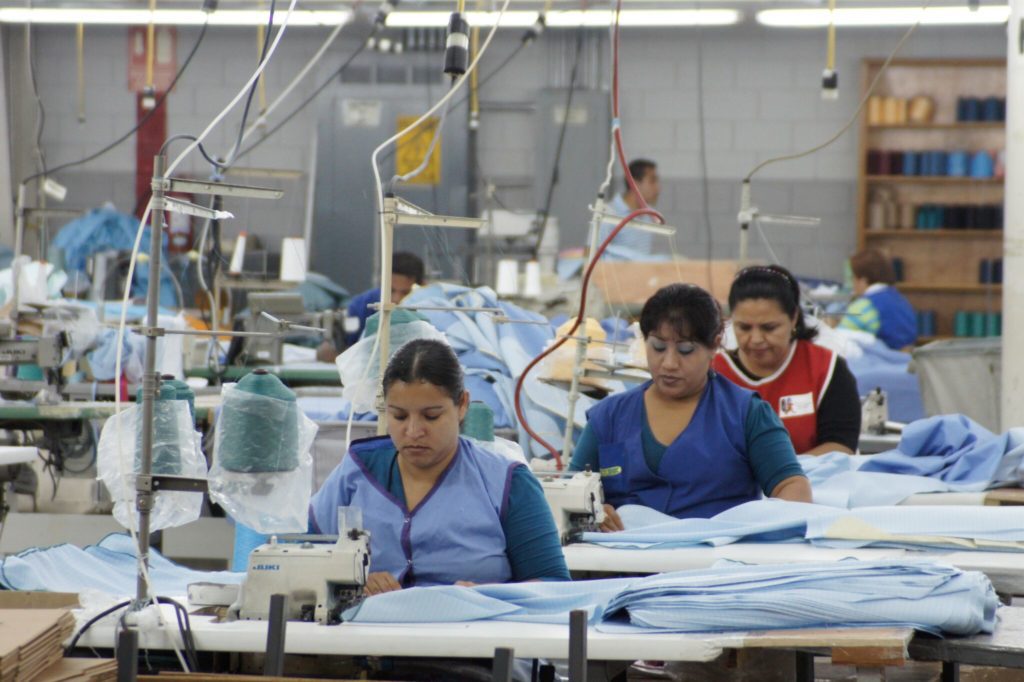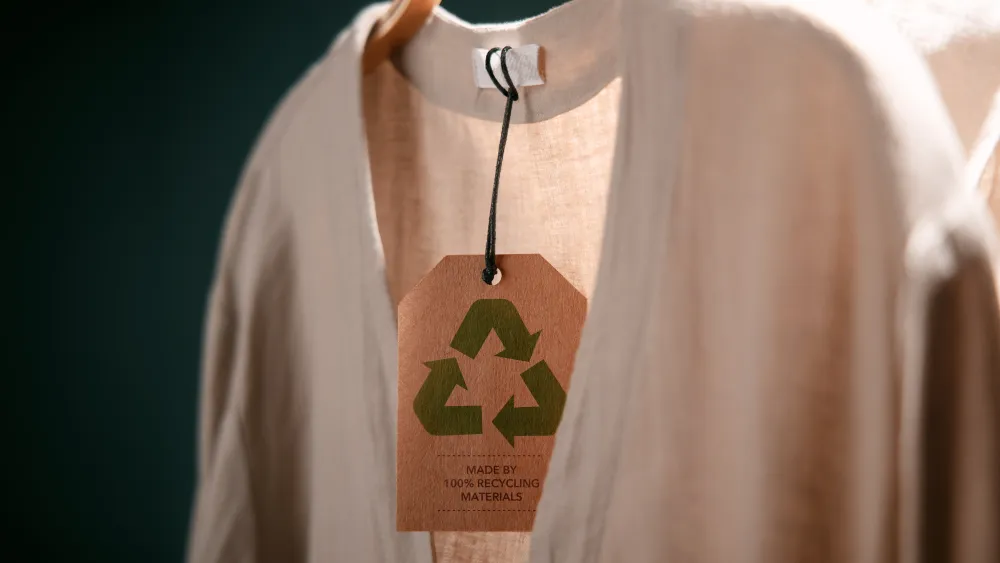FW
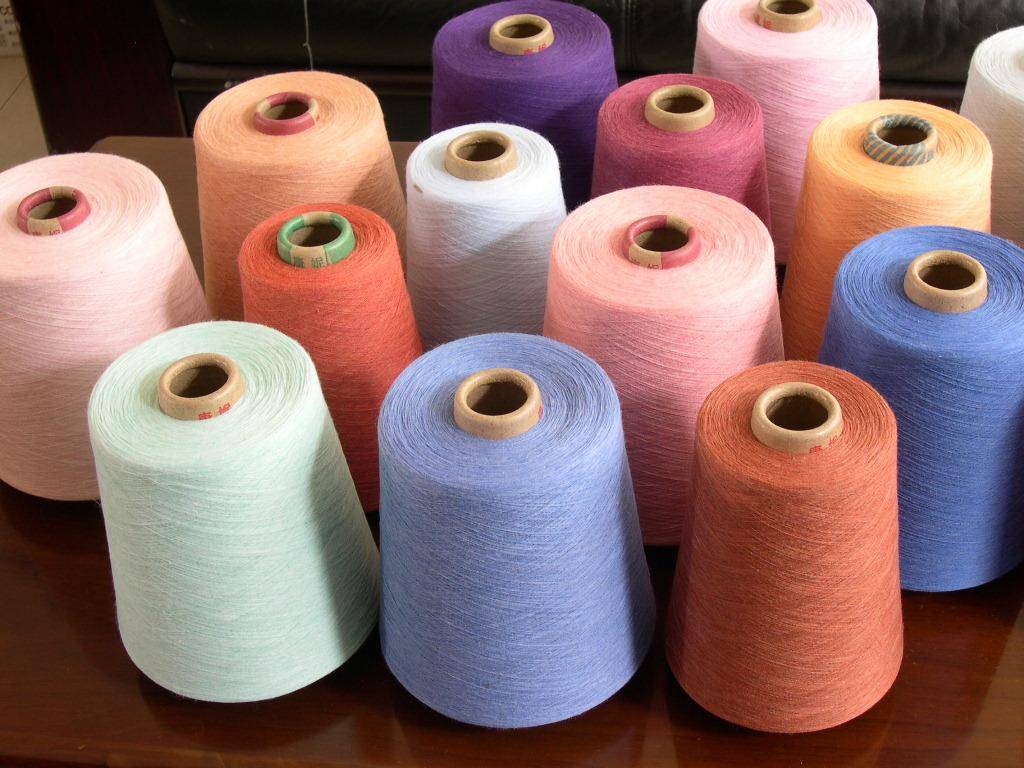 As per International Textile Manufacturers Federation (ITMF) analysis global yarn production dropped in Q4 of 2013 in comparison to the previous quarter as a result of lower output in Asia, South and North America while production in Europe was up. Year-on-year global yarn production was up in all regions except South America. Worldwide yarn stocks rose due to higher inventories in Europe and Asia and despite lower ones in South America. On an annual basis global yarn stocks were up in all regions, except in South America. Yarn orders in Europe increased slightly but dropped in Brazil in Q4/2013. Compared to last year’s quarter yarn orders were lower both in Brazil and Europe.
As per International Textile Manufacturers Federation (ITMF) analysis global yarn production dropped in Q4 of 2013 in comparison to the previous quarter as a result of lower output in Asia, South and North America while production in Europe was up. Year-on-year global yarn production was up in all regions except South America. Worldwide yarn stocks rose due to higher inventories in Europe and Asia and despite lower ones in South America. On an annual basis global yarn stocks were up in all regions, except in South America. Yarn orders in Europe increased slightly but dropped in Brazil in Q4/2013. Compared to last year’s quarter yarn orders were lower both in Brazil and Europe.
Estimates for yarn production for Q1/2014 are positive in Asia, Europe, North and South America. Estimates for fabric production for Q1/2014 are positive in Asia, Europe and South America and negative in North America. The outlook for yarn production for Q2/2014 is positive in Asia and unchanged in Europe and South America. The outlook for fabric production for Q2/2014 is positive in Asia and unchanged in Europe and South America.
In comparison to the previous quarter world yarn output dropped in Q4 of 2013 by -15.4 per cent due to lower output in Asia (-16.1 per cent), South America (-14.7 per  cent) as well as in North America (-6.7 per cent) and despite an increase in Europe (+4.6 per cent). In comparison to Q4/2012 global yarn production rose by +8.7 per cent as a result of higher production levels in Asia (+9.6 per cent), North America (+5.0 per cent), Europe (+0.7 per cent) irrespective of a decline in South America (-6.7 per cent).
cent) as well as in North America (-6.7 per cent) and despite an increase in Europe (+4.6 per cent). In comparison to Q4/2012 global yarn production rose by +8.7 per cent as a result of higher production levels in Asia (+9.6 per cent), North America (+5.0 per cent), Europe (+0.7 per cent) irrespective of a decline in South America (-6.7 per cent).
Compared with the previous quarter global fabric production rose in Q4/2013 by +4.3 per cent with Europe and Asia recording higher outputs of more than 6.4 per cent and 5.6 per cent, respectively, while South America’s production fell by -15.3 per cent. Year-on-year global fabric production was up as well (+3.5 per cent) with Asia recording a production jump of +5.4 per cent and Europe of +2.0 per cent, while South America recorded a slump of -19.8 per cent. Fabric stocks were slightly higher globally as a result of higher inventories in North and South America, while stocks were reduced in Europe and Asia. In comparison to last year’s quarter worldwide fabric stocks fell due to lower inventories in South and North America while stocks rose in Asia and Europe. Fabric orders in Brazil and Europe decreased, but on an annual basis fabric stocks were up both in Brazil and Europe.
Estimates for yarn production for the first quarter of 2014 are positive in Asia, Europe, North and South America. Estimates for fabric production for Q1 are positive in Asia, Europe and South America and negative in North America. The outlook for yarn production for Q2/2014 is positive in Asia and unchanged in Europe and South America. The outlook for fabric production for second quarter is positive in Asia and unchanged in Europe and South America.
ATDC has collaborated with NPC to promote the 'Lean Manufacturing Competitiveness Scheme' of MSME in various apparel clusters across India. They have made a beginning in Gurgaon to reach and benefit member exporters in particular. A seminar at Apparel House, Gurgaon was presided by Virender Uppal, Chairman, AEPC, ATDC & IAM and Harbhajan Singh, DG, NPC, who inaugurated the seminar.
The awareness program was divided in two sessions. The ‘inaugural session’ was addressed by Virender Uppal, Harbhajan Singh, Hari Kapoor, Vice Chairman, ATDC, H K L Magu, Chairman F&B-AEPC, Darlie Koshy, DG & CEO, ATDC & IAM and Anil Peshawari, VP, NAEC along with other speakers shared the benefits of adopting lean management and its benefits.
Talking on the occasion, Uppal said, “The ever changing technologies and the pressing need for increasing competitiveness in apparel industry are necessitating the need for trained workforce and introduction of new approaches. Apparel Training & Design Centre (ATDC) addresses the trained manpower needs of apparel industry specifically technical personnel in different tiers of manufacturing, from shopfloor to supervisory levels. ATDC has made rapid progress under the Integrated Skill Development Scheme (ISDS) of Ministry of Textiles (MOT), Govt. of India (GOI) as a nodal agency by setting up about 200 centres on a pan-India basis covering 22 states, 3 ATDC SMART Training of Trainers (TOT) Academies.”
Harbhajan Singh gave a perspective of the lean manufacturing scheme especially its relevance in context of the global competiveness. He also mentioned that 350 clusters wasn’t a limit and more number of clusters could be formed if required. He brought forth that during the implementation of the scheme, other areas would also be addressed and facilities may be provided.
Following the inaugural session, the 'technical session' saw participation of key speakers, M L Suryaprakash, Director, NIMU, who shared details on lean manufacturing competitiveness scheme and its benefits to manufacturing units. Pooja Makhija, lean manufacturing consultant explained the role of lean manufacturing in apparel sector, along with case studies from the Pilot Phase clusters & Bangladesh. Nimesh Dave, lean manufacturing consultant, Gurgaon, presented various case studies showcasing how the companies have been helped and achieved target just by adoption of simple lean manufacturing techniques.
A large number of spinning mills in Punjab province of Pakistan closed down because they had no gas connections and had to operate on electricity, which is more expensive. Punjab hosts 70 per cent of Pakistan’s textile industry.
Many mills continuing to operate have had to reduce one work shift. Because of the high cost of power, the textile sector is at a huge disadvantage of Rs 100 billion against mills in the other provinces of Pakistan. The All Pakistan Textile Mills Association has been pleading with the government to act swiftly to save the multibillion dollar textile sector which is at risk because of the high energy cost, but has received little response.
Prime Minister Nawaz Sharif had recently decided to form a high-powered committee on the textile crisis in Punjab, but it has yet to be convened. The five-member committee is to be headed by finance minister Ishaq Dar, with commerce minister Khurram Dastaghir, textile minister Abbas Khan Afridi, minister for water and power Khuwaja Asif, and minister for petroleum and gas Shahid Khaqan Abbasi as its other members.
www.aptma.org.pk/
Apparel factories in Bangladesh with a good track record of workers' welfare are receiving increased orders from global retailers and buyers. On the other hand, export orders have been decreasing with non-compliant factories. Workers' safety system, firefighting equipment, evacuation mechanism, proper installation of machines and healthy work environment are among the compliance issues.
International brands and buyers consider the fire and structural safety of garment factories before placing import orders. Big factories compliant with labor standards have seen a sharp increase in work orders in recent months. A big number of international buyers are now turning to bigger and better compliant factories, resulting in increased orders. Medium and small factories which do not fulfill safety standards are going to face a shortage of orders.
Of the 5,500 factories listed by the Bangladesh Garment Manufacturers and Exporters Association, 3,500 are running and about 2,000 to 2,200 units have taken utilisation declaration from the association. Knitwear and woven garments exports of Bangladesh posted 16 per cent and 13 per cent growth respectively in the first nine months of the current fiscal year. The readymade garment sector contributed $21.51 billion to the country's export basket in the last 2012-13 fiscal year, and is eyeing $24.14 billion in the current fiscal year.
www.bgmea.com.bd/
The Bombay High Court has dismissed Birla’s plea over a stake in Century Mills property in Worli. The order comes as a relief to industrialist Nusli Wadia, who had opposed Century’s originating summons against him.
Justice R D Dhanuka said that this court has no jurisdiction to decide the originating summons taken out by Century Textiles & Industries in view of Section 41 of the Presidency Small Causes Act and in view of the filing of a suit by Wadia in the small causes court. The fate of the property battle between the Birlas and the Wadias over the prime piece of land occupied by Century Mill will now be decided by the small causes court, posted a hearing in May.
The HC had to decide if it had the jurisdiction to hear and decide issues raised by a Birla group company Century Textiles against Wadia, whose great-grandfather leased his land to the company to run only a mill. Century Textiles and Industries, founded in 1897 and now led by Kumar Mangalam Birla, in 2009 moved the Bombay HC seeking interpretation of certain clauses of a 999-year lease deed issued in the late 1800s by industrialist Nusli Wadia’s father in its favour. Wadia in 2009 terminated the lease deed and sought eviction of the Birlas from the leasehold land, which is almost 50,000 sq. yard. But Birla's plea in the HC, through senior counsel Iqbal Chagla, is that they are entitled to retain the land even after the closure of the mill in 2008.
Represented by senior counsel Rafique Dada and solicitor Shrikant Doijode, Wadia raised a preliminary issue of jurisdiction of Birla's plea to even be entertained by the HC. They denied Birla's contention that it was entitled to a relief and said it was the small causes court which could hear and decide landlord-tenant issues, even when it involved a former tenant, as in this case due to termination of lease deed due to violations of lease conditions. The lease said the land could be used to build a mill and mill-related structures only, and not other structures that the company has put up. In December 2010, the small causes court stayed any new construction on the leasehold land. A majority part of the Century Mill is owned as freehold land by the Birlas through the Century Textiles Company.
The Knitwear Technology Mission (KTM) in Tirupur will be operational from May 6. Set up by the Apparel Export Promotion Council at a cost of Rs 13 crores, it is aimed at promoting product and fabric diversification and value addition across the apparel value chain. It would offer the necessary services to trade and industry to develop innovative apparel categories for sportswear, swimwear and varieties of performance wear mainly from manmade fibers like polyester and nylon.
KTM has imported the latest version of the tricot warp knitting machine from Germany, which can be utilised by the Indian apparel exporting community for its sampling needs. The center would also impart consultancy and training in the fields of knitting, processing, garmenting, CAD/fashion designing, new product development, testing and consultancy for yarn and fabrics. It has a facility to train at least 5,000 people every year.
Meanwhile knitwear exporters from Tirupur are optimistic about business ahead. With exports soaring Rs 17,817 crores in the just ended fiscal after stagnating at around Rs 13,000 crores for almost three years in a row, garment exporters are positive about country’s business prospects. India will emerge as the number one country in export of garments in the near future if the new government that comes to power at the Centre succeeds in finalizing the free trade agreement (FTA) with the EU, which has so far been delayed by administration and technical hurdles.
Talking to the media, the past chairman of the Apparel Export Promotion Council and President of Tirupur Exporters’ Association, A Sakthivel said that India’s exports achieved 30 per cent growth in rupee terms compared with last year. He said that the improvement in export figures is due to manufacturing cost in China and non-compliance of factory norms in Bangladesh.
He said that over 95 per cent of the factories in Tirupur adhere to the importers compliant norms stringently and the fall in rupee value and increased purchasing power in the EU market have also helped in improving export turnover from the Tirupur region. Economic recovery in the US market as well as penetration into newer territories such as Japan, Australia and South America has also boosted India’s garment exports.
More than 1,100 participants gathered at the Copenhagen Opera House for the Copenhagen Fashion Summit organised by the Danish Fashion Institute on April 24. The event witnessed 23 experts focusing on topics like consumer behaviour, recycling and CO2 emissions in the wake of need for guiding the industry towards a more sustainable future.
Talking about how the entire textile and apparel world is moving towards sustainability, Justin Keeble, Managing Director of Accenture's Sustainability Services across Europe, Africa and Latin America, said that the global market for sustainable fashion has risen 40 per cent since 2000. Noting that more than 90 per cent of all garments are disposed off within six months, he said that there is a need to create a circular economy for the fashion industry.
Bangladesh's Rana Plaza disaster that claimed several lives owing to non-compliant factory conditions, was also a major topic of discussion as speakers pointed out that consumers are seeking assurance that fashion production is ecologically and socially sustainable. For instance, Helena Helmersson, Head of Sustainability at Sweden's Hennes & Mauritz (H&M), said that as per her company's latest market research in just one year, from 2012 to 2013, a 21 per cent increase has been noticed among consumers showing interest in sustainability. Apart from implementing several sustainable initiatives in 2013, H&M also worked with the International Association for Textile Care Labelling (Ginetex) to launch the Clevercare project at the summit. The system provides information to consumers on how to look after their clothes to make them last longer, using less toxic methods to keep them clean. H&M has already implemented the Clevercare system.
Marco Bizzarri, President and CEO at Italian luxury brand Bottega Veneta said that even prospective employees appearing for the interview are interested in knowing about company’s sustainability initiatives. All of Bottega Veneta's raw materials come from Europe, which makes it easier to check their production. At the end of the year, the brand will release a collection of handbags, where the leather has been certified through the entire chain, from breeding, manufacturing and shipping to outlets. It has also built its new headquarters in northern Italy using sustainable design methods.
Leading computerized flat knitting machine manufacturer Shima Seiki will participate in the Techtextil North America exhibition in Atlanta, US, next month. On display will be the company’s latest technological contributions to the field of technical textiles including a new machine for inlay fabrics for technical applications.
SRY123LP is Shima Seiki’s latest computerized knitting machine that features loop presser beds mounted atop conventional needle beds that provide improved control over press down of individual loops. This presents unprecedented capability especially with partial knitting patterns and inlay patterns.
Inlay fabric is produced by inserting yarn into existing knit fabric in a weave fashion, opening opportunities for expansion into markets for wovens. Inlay also suppresses typical stretch characteristics of knitted fabrics, and since new materials such as metallic and monofilament yarns can be used for inlay structures, new applications in industrial textiles are realized.
Known for its pioneering whole garment knitting technology, wherein a knitted item is produced in its entirety without seams, Shima Seiki will also introduce its new SWG061N2 compact whole garment knitting machines that feature the company’s original SlideNeedle.
Shima Seiki makes computerized flatbed knitting machines, whole garment knitting machines, computerized flat knitting machines, glove and sock knitting machines, computer graphic design systems, computerized CAM machines, textile printing machines and related peripherals.
www.shimaseiki.com/
Around 20,000 Cambodian garment workers have joined a strike to demand a $50 dollar for shunning walkouts over the last three months. Workers at around 30 factories in two special economic zones near the Vietnamese border want the bonus after a union said that two factories had rewarded employees for not participating in the strikes, which routinely cripple the industry.
However the Garment Manufacturers Association of Cambodia (GMAC) has denied factories had promised to pay workers for not striking and warned their action could snowball. GMAC has called on authorities to prevent illegal activities that could lead to violence, accusing some of the striking workers of hurling stones at factories.
Garment workers have been at the forefront of labor protests for higher wages and have faced several crackdowns by Cambodian authorities. About 6,50,000 workers provide the backbone of Cambodia’s multi-billion dollar garment industry. The kingdom’s lucrative garment sector has been rattled by a series of labor disputes.
Trade unions and workers plan to mark May 1 (International Labor Day) by marching in the capital Phnom Penh to demand higher wages, better working conditions and the release of activists and workers arrested in the violent January protests.
www.gmac-cambodia.org/
Denim by Premiere Vision will hold its debut edition in Spanish city of Barcelona on May 21–22. Nearly 100 exhibitors from 20 countries are expected to participate, an increase of 5 per cent compared to May 2013 edition. The exhibitors include mill owners, manufacturers and finishers. Of these, 22 per cent are accessories manufacturers and the rest consisting of machinery manufacturers, spinners, textile manufacturers and new technologies.
In terms of nationalities, Turkish businesses account for 31 per cent of the exhibitor list, Italians 20 per cent, Morocco 9 per cent and Tunisia 3 per cent with a few exhibitor companies coming from Japan, Indian, Pakistan, Hong Kong and Brazil.
At its May 2013 edition, Denim by Première Vision saw over 3,000 visitors, with 72 per cent coming from abroad. Moving from Paris to Barcelona’s 19,000 sq. mtr. hall of the Fira Barcelona Montjuic, the organizers have kept the fair's theme as ‘play the game’, which will culminate in an evening event complete with gaming tables.
www.denimbypremierevision.com

